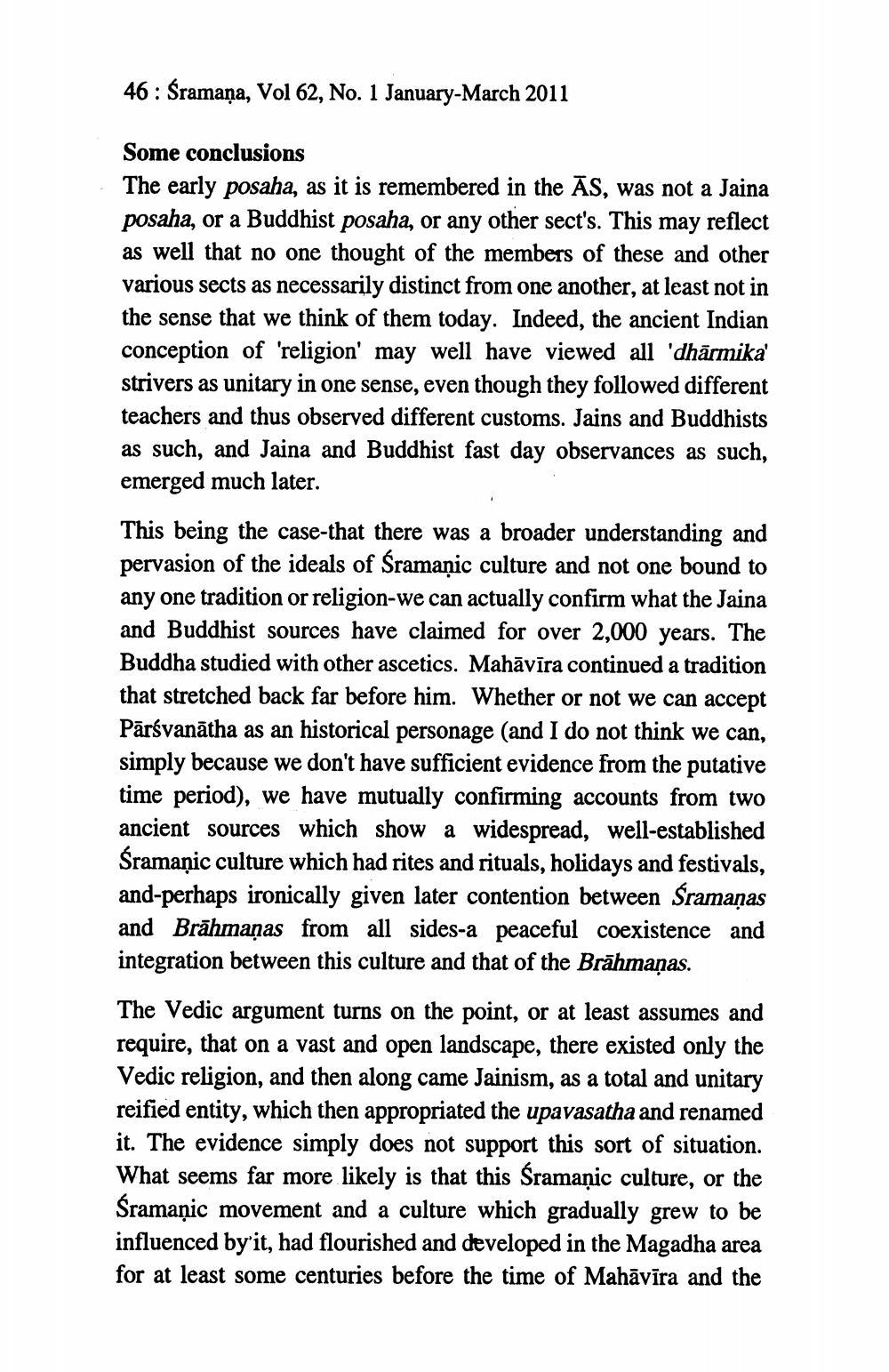________________
46: Sramaņa, Vol 62, No. 1 January-March 2011
Some conclusions The early posaha, as it is remembered in the ĀS, was not a Jaina posaha, or a Buddhist posaha, or any other sect's. This may reflect as well that no one thought of the members of these and other various sects as necessarily distinct from one another, at least not in the sense that we think of them today. Indeed, the ancient Indian conception of religion' may well have viewed all 'dhārmika strivers as unitary in one sense, even though they followed different teachers and thus observed different customs. Jains and Buddhists as such, and Jaina and Buddhist fast day observances as such, emerged much later. This being the case-that there was a broader understanding and pervasion of the ideals of Sramaņic culture and not one bound to any one tradition or religion-we can actually confirm what the Jaina and Buddhist sources have claimed for over 2,000 years. The Buddha studied with other ascetics. Mahāvīra continued a tradition that stretched back far before him. Whether or not we can accept Pārsvanātha as an historical personage (and I do not think we can, simply because we don't have sufficient evidence from the putative time period), we have mutually confirming accounts from two ancient sources which show a widespread, well-established Śramaņic culture which had rites and rituals, holidays and festivals, and-perhaps ironically given later contention between Sramaņas and Brāhmaṇas from all sides-a peaceful coexistence and integration between this culture and that of the Brāhmaṇas.
The Vedic argument turns on the point, or at least assumes and require, that on a vast and open landscape, there existed only the Vedic religion, and then along came Jainism, as a total and unitary reified entity, which then appropriated the upavasatha and renamed it. The evidence simply does not support this sort of situation. What seems far more likely is that this Śramaņic culture, or the Śramaņic movement and a culture which gradually grew to be influenced by'it, had flourished and developed in the Magadha area for at least some centuries before the time of Mahāvīra and the




